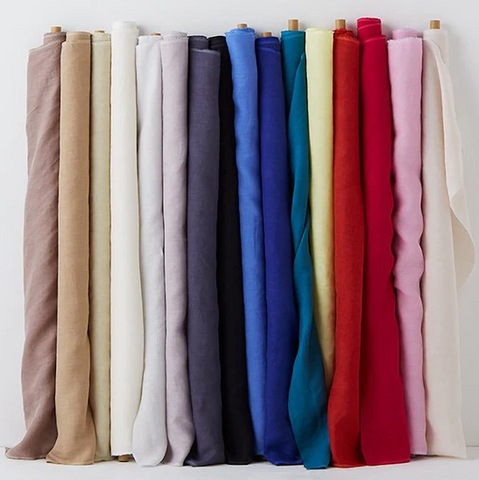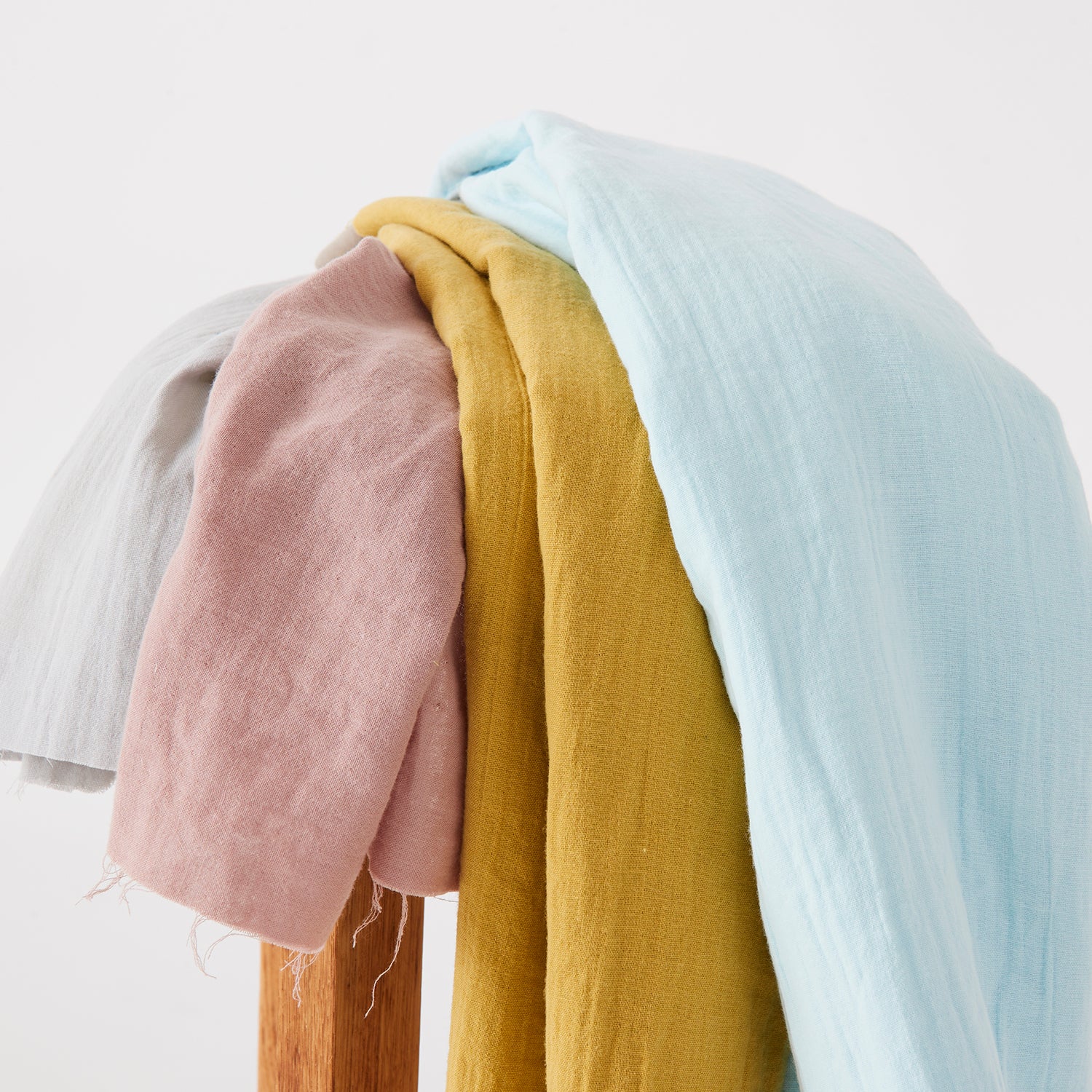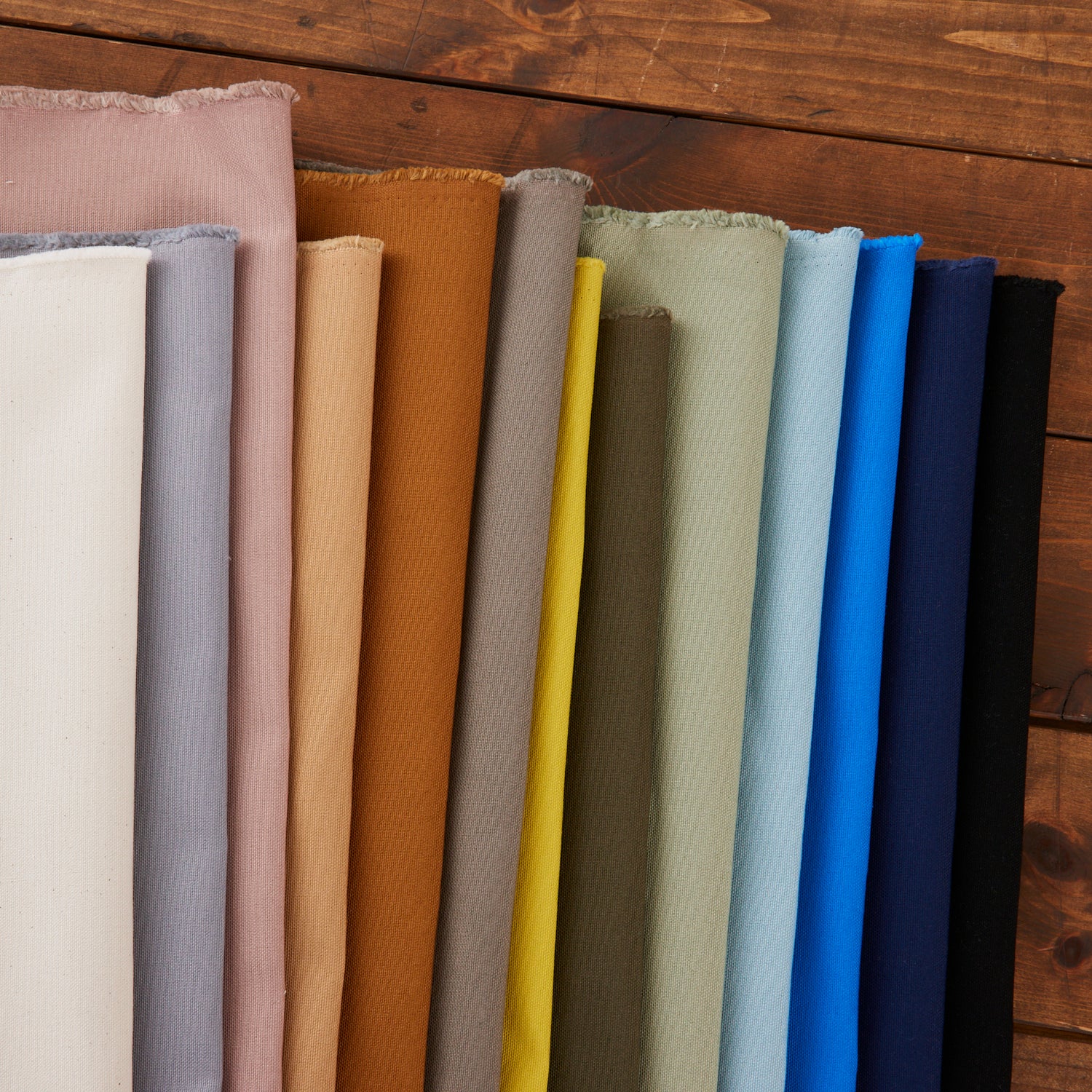Caring for your fabrics correctly is important if you want to extend the life of your creations. As shrinkage is likely to occur in fabrics that use natural fibers, we recommend that you do a pre-wash of the fabric before using it in a project in the way you intend to wash the fabric in the future.
Please follow the guidelines below about washing your fabrics in order to make sure you reduce the damage incurred to fibers by laundering. If you'd like to learn more about pre-washing, click here.
Cotton

Cotton fabrics are machine-washable, but prone to wrinkles. But don’t worry, as 100% cotton fabrics can be ironed on a high heat without damaging fibers. For white cotton fabric, you can wash in hot or warm water, whereas colored fabrics should be washed in cold water to prevent the color from running.
As fabrics made of 100% cotton are prone to shrinkage, it is safer to air dry your cottons rather than to put them in the dryer.
Read: Cotton Fabric vs Linen Fabric: The ultimate guide to the differences
Linen

Linen is a fiber made from the flax plant that has been used since ancient times to create clothing, bedding, upholstery, curtains, and much more. Like cotton, linen is a durable natural fiber that won’t stretch or shrink in the washing machine, however it is best to wash linen fabrics on a cooler setting.
Linens can be dried in a dryer on a medium heat, however we recommend to air dry your makes made from linen fabric.
Silk

Silk is a notoriously delicate fabric and is often taken to the dry cleaners in order to be washed. However, you can safely clean silk at home if you take the necessary precautions.
Silk should never be machine washed or put in the dryer. Make sure to handwash your silks in cool water and use a detergent specially made for cleaning silk. Once finished washing your silks, do not wring them out to remove excess water. Gently squeeze, and leave it on a cotton towel to air dry. You should not iron your silks as the heat can damage the fibers.
Wool

Although it's always safer to handwash your wools, as long as you are careful, there is no issue with washing wool-based fabrics in the washing machine. Just make sure to either wash your wools on the wool setting, or use a cold-water delicate wash. To ensure the best results, use a detergent that is designed for wool.
You should also take care when drying your wools so as not to ruin the shape of the piece. Without wringing the garment, gently press the damp fabric back into shape on a towel, and then air dry it flat, rather than on a hanger. Do not put your wools into the dryer, as this will cause some serious shrinkage!
Cashmere
Caring for cashmere is more or less the same as washing other wool products. Wash the cashmere on a delicate cycle with cold water and a detergent that is suitable for cashmere. We also recommend putting your cashmeres in a mesh bag to decrease direct impact to the fabric.
Once again, you should dry cashmeres just like other wools: refrain from wringing the garment, dab the excess water with a towel, and lay flat to dry.
Viyella

Viyella (also known as winter cotton) is a cotton-wool blended fabric, and can be washed in a washing machine. We recommend washing Viyella on the delicate setting with a wool-friendly detergent to be on the safe side.
You should not put Viyella fabrics in the dryer, and air dry flat for best results.
Leather & Suede
Leather and suede are fabrics made from the hide of animals (most commonly cows and sheep) and don’t accumulate dirt in the same way as other fabrics.
For leather, you can use a soft brush or clean cloth to remove dust. For tougher stains, use a leather cleaning solution (for treated or untreated leather, depending on the type) and spot treat the area.
Suede can be more difficult to clean compared to leather, especially since even water can damage this delicate fabric. It’s a good idea to invest in a suede brush and wipe away dirt and dust periodically, to keep your suede fabrics in good condition. If you get a water or another liquid-based stain on your suede items, immediately blot the stain with a clean cloth or paper towel. Make sure not to apply too much pressure, as this will force the stain deeper into the fabric.
As both leather and suede fabrics are difficult to wash correctly without damage, we recommend you take your leather and suedes to a laundry professional.
Synthetic Fabrics (Polyester, nylon, spandex, acrylic, acetate, etc)

At Kokka Fabrics, we deal almost exclusively with fabrics made with natural fibers, like cotton and linen. However, it’s undeniable how prevalent synthetic fabrics like polyester are in the apparel industry, due to the low cost of production and their versatility. In recent years, it’s been found that washing synthetic fabrics releases microplastics into the ocean. Our tips below can help reduce the amount of microplastic shedding that occurs when you wash your clothes made from synthetic fabric.
- Wash in cold water. Washing in hot water weakens the fiber and releases more microplastics into the water. Washing in cold water also has the benefit of reduced energy consumption, which is also better for the environment.
- Wash your clothes less. Washing your clothes less frequently means that less microplastics are released into the sea. Spot clean and air out your clothes to increase the amount of time between washes.
- Reduce the spin cycle of your washing machine. The faster your washing machine spins, the more friction is created in the fibers, and the more the fabric begins to shed.
- Use a filter or a laundry bag specifically designed to catch excess microplastics that shed from synthetic fabrics. Nowadays you can find a variety of products designed to reduce microplastic shedding during laundry, and we recommend you use one when washing your synthetics.
All of these tips also apply to when you pre-wash synthetic fabrics before starting a project.
Semi-synthetic Cellulose Fabrics (Rayon, lyocell, modal, viscose, bamboo viscose, etc)

Semi-synthetic fabrics are textiles that have been spun with processed plant pulp. As semi-synthetic fabrics like rayon and lyocell have a tendency to shrink and bleed color, we recommend you wash your semi-synthetics on a cold wash, and hand wash where possible.
As semi-synthetics are prone to shrinkage, we suggest that you air dry all of your semi-synthetic fabrics and not use a dryer.
Learn to Care for your Fabrics
While it may seem tempting to just throw all of your fabrics in the washing machine, the way you launder your fabrics makes a huge difference in how long you can enjoy your makes. When in doubt, we recommend seeking advice from a laundry professional, who can help you choose the best way to wash a particular fabric.
___________________________
Looking for the perfect fabric?




































